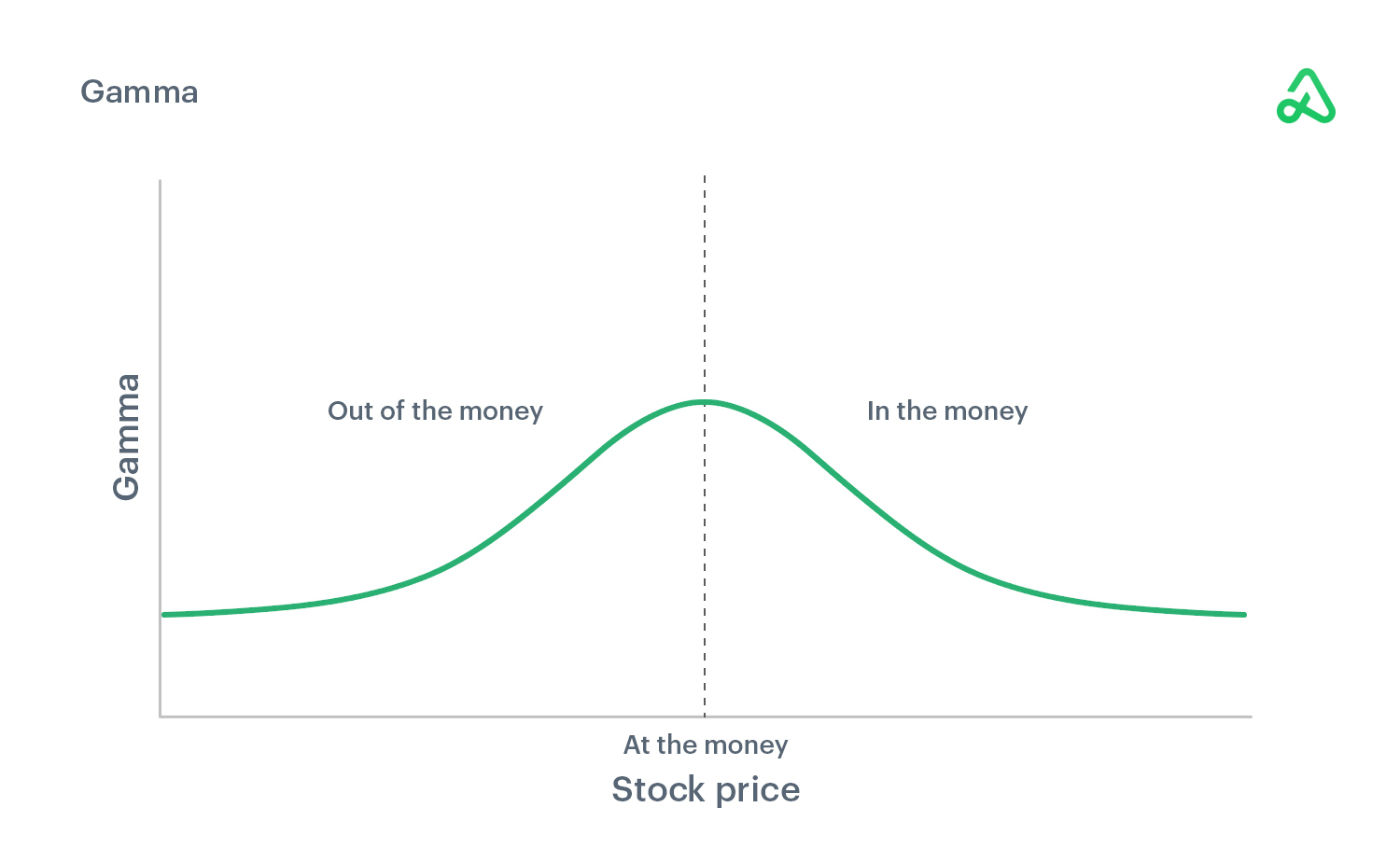Gamma is a measure of an option’s rate of change in relation to the underlying asset’s price. Specifically, gamma measures the rate of change of delta. Delta is an option’s sensitivity to movements in the underlying asset’s price.
Gamma is the rate of change in delta for every $1 change in the underlying price.
When an option has a positive gamma, it means when the underlying stock moves up by one dollar, its delta will increase by the gamma amount. Negative gamma options’ delta will decrease by the gamma amount if the underlying decreases $1.
Gamma tells you the accelartion of delta’s change as the underlying stock’s price increases and decreases. Gamma is higher for options close to expiration. Gamma is higher for at-the-money contracts and therefore more sensitive to changes in the underlying asset price.

How to use gamma in options
Traders can use gamma can to understand how much their positions will change as the stock price moves up or down. For example, if a trader owns a call option with a positive delta and high gamma, they know that their position will gain more value as the stock price rises than an option with a lower gamma.
Gamma example
If a stock’s price rises by $1, the delta will increase by gamma. For example, if you have a call option with a 0.50 delta and its gamma is 0.25, then your call option’s delta will increase to 0.75 if the stock price increases by $1.
So, if an option’s delta is 0.50 its gamma is 0.25, the first dollar move in the underlying asset will see the option’s price change by $0.50. The stock’s next dollar move will see the price of the option change another $0.50 plus an additional $0.25.
What is gamma risk?
Gamma risk is the risk associated with changes in the delta of an option as the underlying asset’s price changes. Gamma risk increases as an option approaches expiration because time decay is greater for near-term options than it is for longer-term options. Therefore, any move in the underlying, especially for in-the-money options, are magnified and can significantly impact the option's price near expiration. Gamma risk is less prevalent in out-of-the-money options and options that are further from expiration.
Gamma risk applies to both calls and puts. A long call option has a positive gamma, meaning that its delta will increase as the underlying asset’s price rises. A put option has a negative gamma, meaning that its delta will decrease as the underlying asset’s price rises.
Positive and negative gamma
Gamma can be positive or negative depending on the option position. Long options have positive gamma while short options have negative gamma.
Gamma illustrates the “curvature” of an option because it measures how much an option’s delta will change when the underlying stock moves.
When delta is higher, it means that the option price will increase more for each point move in the underlying asset. Taders with bullish positions will benefit from increasing prices in the underlying asset and suffer when prices decrease. On the other hand, traders with short positions will benefit from decreasing prices and suffer when prices increase.
The opposite holds true for negative gamma options which are usually put options. When delta is lower, it means that the option price will decrease more for each point move in the underlying asset. This means that traders with long positions will suffer from increasing prices and benefit when prices decrease.
Gamma options strategies and hedging
The gamma of an option is a measure of the rate of change in the delta of the option due to a change in the underlying asset’s price. Gamma is particularly important for options traders who use strategies such as straddles, strangles, butterflies, and condors.
Traders can use gamma to adjust their strategies to take advantage of market movements. For example, if a trader has bought a long call and long put (a strangle), they can adjust their positions using gamma if they expect volatility to increase or decrease. If they expect volatility to increase, they could buy more calls and puts; if they expect volatility to decrease, they could sell calls and puts.
Gamma can also be used for hedging purposes. If you are long on a stock and want to hedge against losses due to falling prices, you could buy options with high gammas (delta neutral). This would offset any losses from your long position while still allowing you to benefit from any increases in the stock price.







